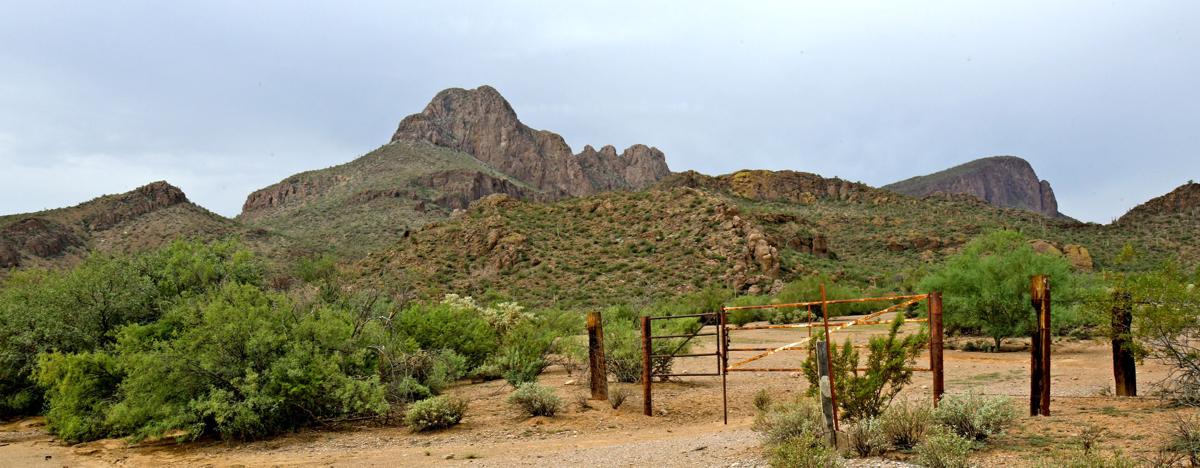The planned Lazy K Bar Ranch development near Saguaro National Park West has hit its latest hurdle — a second prospective homebuilder pulled out.
Meritage Homes exited the Marana project, with economics appearing to be a factor. But Lazy K landowner Peter Evans said the owners are now negotiating with another builder, whom he didn’t name. Evans said he remains confident the 178-home project on 138 acres will proceed as planned, with upscale homes selling for up to $500,000.
Meritage, which had been negotiating with Lazy K’s landowners, “had it under contract for a short time” for a potential purchase, but hasn’t had a contract pending since September, said Lisa Hoskin, Meritage’s director of land acquisition. The two parties were in informal negotiations as long ago as April.
“We entered into negotiations with the seller, but it ultimately didn’t move forward,” Hoskin said this week. “We have no interest in the property now, contractual, ownership or otherwise.”
Hoskin and Evans declined to say why a deal fell through, with Evans saying, “We just couldn’t reach mutual terms, acceptable to both parties.”
But he said the long-running controversy over the project was “absolutely not” a factor in jettisoning a deal and that he foresees no inherent problems in developing the site.
“In fact, the only problem may be that we as owners think the property is a little more valuable than maybe the buyers do,” said Evans, who co-owns the property with Jim Shiner. “It’s got beautiful views. It’s a great site. Something will get done.”
Marana Town Manager Gilbert Davidson speculated that the project didn’t pencil out for Meritage.
“Obviously, if it penciled out, they would do it,” said Davidson, who will leave the manager’s post at the end of this week for a job as chief operating officer for Gov. Doug Ducey’s administration.
Lazy K, nestled in the Tucson Mountains foothills, was homesteaded in 1928 and reached its peak as a guest ranch in the 1950s. The owners closed the guest ranch in 2007 for economic reasons, triggering a series of conflicts over the land’s future.
In fall 2014, the Marana Town Council killed a rezoning to allow the 178 homes after an outcry arose from many neighbors, environmental groups and Saguaro National Park officials. At the time, Mattamy Homes was planning to build the project. The council turned down the rezoning a second time in January 2015.
In May of this year, the council approved the rezoning, an approval made easier by the fact that in the meantime the Lazy K landowners removed a 150-foot swath of land from their proposal, which eliminated a previous requirement for a “supermajority” of the council to approve the plan. That created a buffer, eliminating the legal impact of protests by neighbors because they now lived too far away to force a supermajority vote.
By then, Mattamy was no longer involved in the project. Mattamy officials couldn’t be reached for comment this week on the Lazy K project.
Lazy K developers and consultants said the project will balance economically viable land use with the environmental concerns. They agreed to set aside 60 percent of the site as open space.
Opponents said a project that size will be out of scale with the surrounding neighborhood and could isolate the park’s wildlife from desert lands. Neighbors generally wanted a cultural and/or historic center on the property, to honor Marana’s farming and ranching heritage.
That’s still the neighbors’ hope, said activist Barbara Rose, who lives on Scenic Drive in unincorporated Pima County near the site and led the fight against the rezoning.
“It’s too much of a waste to do a conventional upscale gated development in a place that has so much more potential,” Rose said Wednesday. “There is a much better outcome for the town of Marana ... with a small, low-density development, with a nature or education component — a green development.”
She said she doesn’t know if a development like that could work economically, but noted that other “green” developments such as Civano on the far southeast side and Milagro, also in the Tucson Mountains but in Tucson, have “penciled out.”
Evans couldn’t be reached to respond to Rose’s statements. He said earlier that he expects to close a deal for the land purchase with another builder in six to nine months.
“The project’s going to get done, and it’s going to get done on terms that both sides are comfortable with, when we’re comfortable and a buyer, a homebuilder, is comfortable,” said Evans, adding he can’t speculate on when home construction will start.
One potentially costly expense facing the builders is a legal requirement that they pay 40 percent of the cost of upgrading a mile-long stretch of Scenic Drive near the site.
A development agreement approved in June by the town and landowners requires an asphalt cover atop a concrete base for what is now a chip-sealed road. Also required are a four-foot-wide, decomposed granite walking path along the road, and two to three traffic “calming” islands on the road to slow driving speeds.
“I would hate to speculate on the cost, but it is not going to be a light amount of money to invest,” town manager Davidson said.





